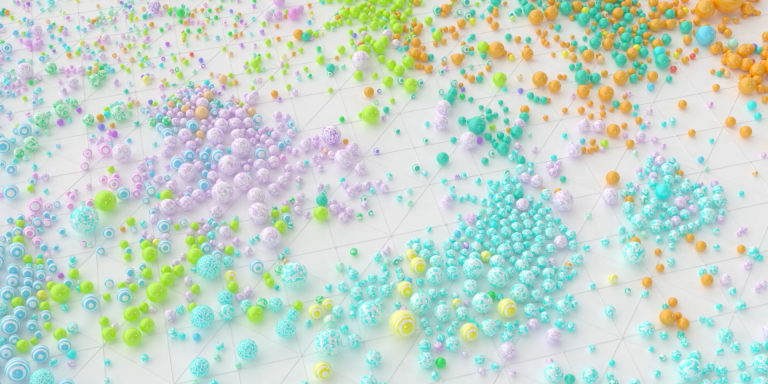“I think with some confidence I can say that 2023 is going to be the most exciting year that the AI community has ever had,” writes Kevin Scott, chief technology officer at Microsoft, in a Q&A on the company’s AI blog . He acknowledges that he also thought 2022 was the most exciting year for AI, but he believes that the pace of innovation is only increasing. This is particularly true with generative AI, which doesn’t simply analyze large data sets but is a tool people can use to create entirely new works. We can already see its promise in systems like GPT-3 , which can do anything from helping copyedit and summarize text to providing inspiration, and DALL-E 2, which can create useful and arresting works of art based on text inputs. Here are some of Scott’s predictions about how AI will change the way we work and play.
1. It Will Unleash Our Creativity
As generative AI becomes more popular and accessible, more people will be able to use the technology for creative expression, whether it’s helping them produce sophisticated artworks or write moving poetry. In his blog post, Scott describes how new AI tools are democratizing access to design. “An AI system such as DALL-E 2 doesn’t turn ordinary people into professional artists, but it gives a ton of people a visual vocabulary that they didn’t have before—a new superpower they didn’t think they would ever have.” DALL-E 2 already shows up in tools like Microsoft Designer, but there’s exciting potential for it to help many more people unleash creative ideas in ways that were once only available to trained professionals.
2. It Will Make Coding Much More Accessible
Generative AI innovations like GitHub Copilot, an AI pair programmer built using OpenAI’s Codex AI system, can translate natural human language into programming code, essentially turning our practical intentions into complex pieces of software. Among Copilot users, 40 percent of the code in some popular programming languages is being generated by Copilot, a figure that is set to increase. In a recent talk at the Fortune Brainstorm AI conference , Scott pointed to the example of people noodling around with the capabilities of ChatGPT (which is powered by GPT-3.5) to hint at the future potential. “It really opens up the aperture of who can actually use AI now,” he says. “We’ll need new sorts of specialties in the future, but you don’t need to have a PhD in computer science anymore to build an AI application, which I think is really, really exciting.”
The upshot is an acceleration of the iterative cycle, as human beings tweak and refine the AI’s work in a virtuous, back-and-forth collaborative process.
3. It Will Become Our Copilot in Other Ways Too
In an essay for Wired UK , Scott sketches a scenario in which AI helps us do our jobs better. Like coding assistance with GitHub Copilot, industries from construction to healthcare, technology to law, could potentially benefit from a form of AI assistance. “The applications are potentially endless, limited only by one’s ability to imagine scenarios in which productivity-assisting software could be applied to complex cognitive work, whether that be editing videos, writing scripts, designing new molecules for medicines, or creating manufacturing recipes from 3D models,” he writes. While there’s concern about how AI will impact human jobs, Scott describes in his post how, with thoughtful application, these AI tools have the potential to augment and amplify human capability, enabling people to spend less time on repetitive tasks. These models will also “democratize access to AI,” he writes, so “you’ll have a more diverse group of people being able to participate in the creation of technology.”
4. It Will Unlock Faster Iteration
Generative AI may significantly reduce the legwork of the creative process by helping designers iterate on product concepts and helping writers generate first drafts of press releases, essays, and scripts, assisting with graphic design–heavy posters, video edits, and more. Scott notes in his Wired essay that it has the potential to “allow knowledge workers to spend their time on higher order cognitive tasks, and effectively transforming how a great many of us interact with technology to get things done.” The upshot is an acceleration of the iterative cycle, as human beings tweak and refine the AI’s work in a virtuous, back-and-forth collaborative process. We will become adept at developing techniques to edit and modify generated images, text, drawings, and even molecules or proteins to be used in new medicines, creating better results more quickly through careful collaboration with AI.
5. It Will Make Work More Enjoyable
In the AI blog post, Scott observes that AI tools for programmers have the potential to vastly improve the overall work experience. “People now have new and interesting and fundamentally more effective tools than they’ve had before,” he notes. “This is exactly what we’re seeing with the experiences developers are having with Copilot; they are reporting that Copilot helps them stay in the flow and keeps their minds sharper during what used to be boring and repetitive tasks.” This also extends to low-code and no-code tools in products like Power Platform that are opening new potential across job functions, roles, and processes. “We did a study that found using no-code or low-code tools led to more than an 80 percent positive impact on work satisfaction, overall workload, and morale.”
Generative AI has the capacity to profoundly alter the working practices of a range of vocations, giving rise to new professions and transforming established ones. With ethical and thoughtful deployment, it is a tool that could help precipitate a revolution in creativity—one that enables everyone to better express their humanity.

